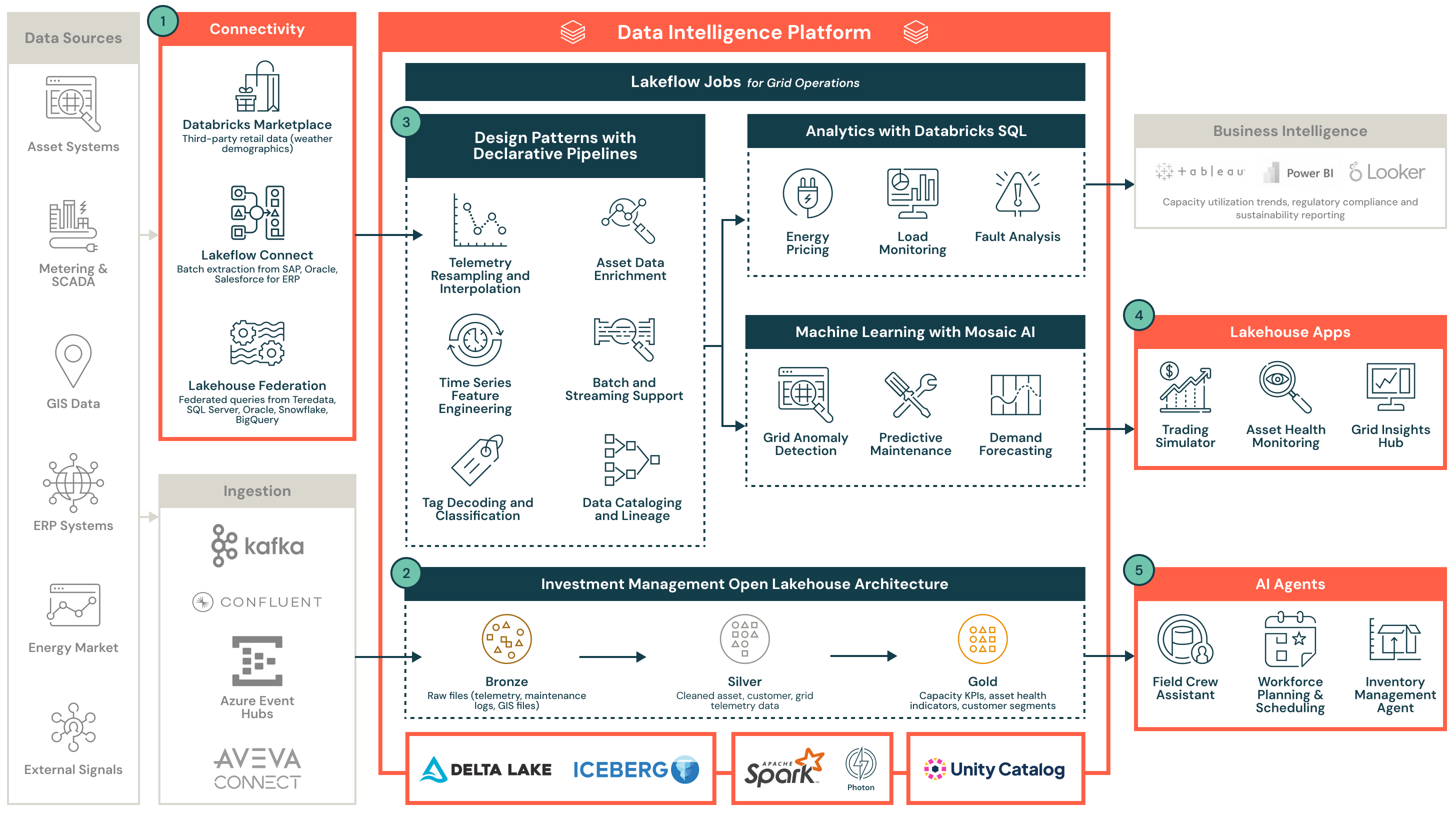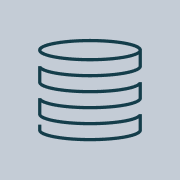Energy Grid Operations Reference Architecture
This architecture helps you understand integrations with common industry sources and sinks in grid operations. It outlines the best practice design patterns across lakehouse architecture.

Data Flow and Important Design Patterns
- Ingestion
Energy producers ingest data at massive scale and velocity from proprietary sources such as AMI, SCADA and historians. With native data sharing capabilities with AVEVA CONNECT, teams can easily configure high-volume, high-velocity integrations directly from OSI PI or leverage message buses like Kafka and Confluent. For slower-changing data from asset management systems and ERP systems, Lakeflow Connect offers out-of-the-box incremental ingestion from sources like SAP, Oracle and Salesforce. - Data Storage
Operational and IT data is landed in Bronze tables and is then cleaned and can be blended and enriched in Silver tables to create consolidated views of asset, network performance and customer data. This data can then be served to the business units as reusable data assets across all business domains, creating a trustworthy data foundation for operations and analytics. - ETL
DLT data is processed as batch or in real time, and out-of-order events and CDC can be handled with one-line configurations, so sensor data and events can be aggregated in near real time and served directly to ops dashboards via Databricks SQL or as features that feed real-time anomaly detection and demand forecasting models. - Reporting and Apps
Data and insights can be surfaced in BI tools for compliance and sustainability reporting, while real-time data and interactive data products can be implemented in custom Databricks Apps front ends for engineering teams to monitor asset health, grid insight apps and other interactive forecasting and scenario simulation interfaces. - AI Agent
With Mosaic AI, build robust multimodal AI agents to interact with multiple systems with context from your network. Bring together intelligent search of SOP documents, live sensor data and inventory images to serve as an assistant for your field teams, assisting in asset diagnostics, performing inventory lookup with onsite photos and closing the feedback loop by providing updates to work orders and inventory in your ERP.


